by Phil Bergman
DATE PALMS
(ALSO KNOWN AS PHOENIX PALMS)
Covered in this Article:
DEFINITION OF A “DATE PALM”
DESCRIPTIONS OF THE MAIN PHOENIX SPECIES
CHARACTERISTICS OF EACH SPECIES
CULTURE OF PHOENIX SPECIES
FREQUENTLY ASKED QUESTIONS ABOUT DATE PALMS
Introduction
“What is a Date Palm?“
Date Palms are a very historically important type of palm tree because they are a source of food that has supplied nutrition to millions of people over thousands of years. But, before we can really talk about “Date Palm Trees”, we must first decide what we are talking about. When you talk to a taxonomist or palm enthusiast and say “Date Palm”, he will automatically think of the true Date Palm, Phoenix dactylifera. This is the species that makes the date fruit that is so commonly eaten. But, when you talk to the average person, “Date Palm” may mean any palm in the group or in fact, any palm at all. Some use the term “Date Palm” and “Palm Tree” synonymously.
When we talk about the Date Palm, we are discussing the group of palms known as Phoenix palms. This genus would include everything from the true Date Palm, Phoenix dactylifera, to the Canary Island Date Palm, Phoenix canariensis. Many have heard of the Pygmy Date Palm. It is in this genus Phoenix as well. But, only one plant, the true Date Palm, gives fruit that is edible and marketable.

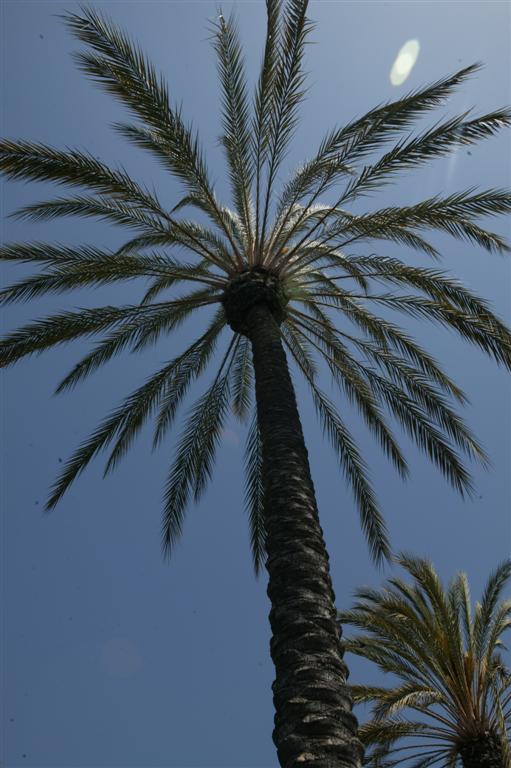
The Genus Phoenix and Its Characteristics
As a group, there are about 13 different species of Phoenix. All are members of the Date Palm group. Their natural distribution ranges from the Canary Islands across northern and southern Africa into the Middle East, far south Europe, and Asia. Plant size ranges from small to massively tall. Some are single trunk and others are clumped (suckering) with more than one stem. All are pinnate or feather type palms. In most areas, Phoenix live in rather arid conditions while a few species tolerate much more humid environments. All trees are pinnate and all share a few interesting characteristics. The petioles are armed with spines. These spines are actually a modified leaflet, typical of this genus. In Phoenix canariensis these spines can reach a length up to a foot long and can be dangerous to the eyes and skin. The Pygmy Date Palm has smaller spines, typically three to five inches long, but equally as dangerous to the eyes.
Another characteristic of this genus are that the leaves are “induplicate”. This means that, in cross section, the leaves a “V-shaped” upward, i.e. they would hold water in this V-shape. Reduplicate leaves are V shaped downward and much more common in the palm world. You can remember this by the reminder that, with induplicate leaflets, the water “goes in the leaflet”.
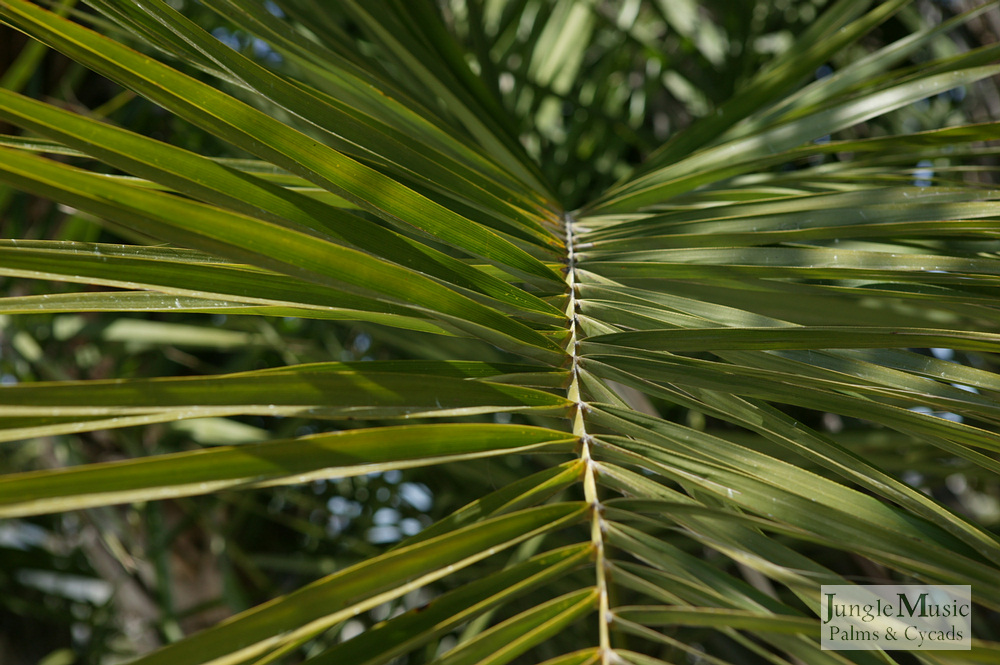
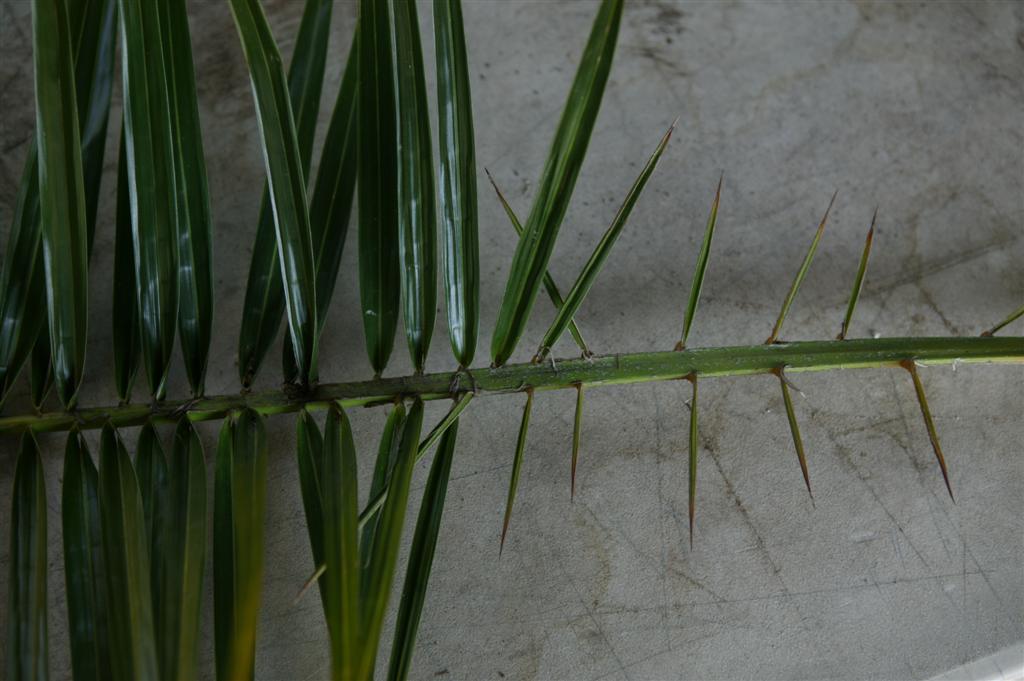
Another interesting characteristic of Phoenix is that all species in this genus are dioecious. This means that any given plant is either a male or a female. One cannot make viable seeds (or fruit) without a male and a female. Non-pollinated female blossoms will abort and fall to the ground without ever making fruit. Pollen from the males is typically distributed by either wind or insects to the females. In date groves, this may be done manually by workers. Date Palm seeds are formed in large dependent clusters and the fruit is initially green, turning to yellow/red, and finally to a tan/brown or black color. The fruit or pulp layer of the true Date Palm is much thicker than this layer in other species of Phoenix. It is sweet and quite rich in sugar. It is because of this thick fruit layer that the Phoenix dactylifera is the only species grown for consumption of the fruit as a food crop.
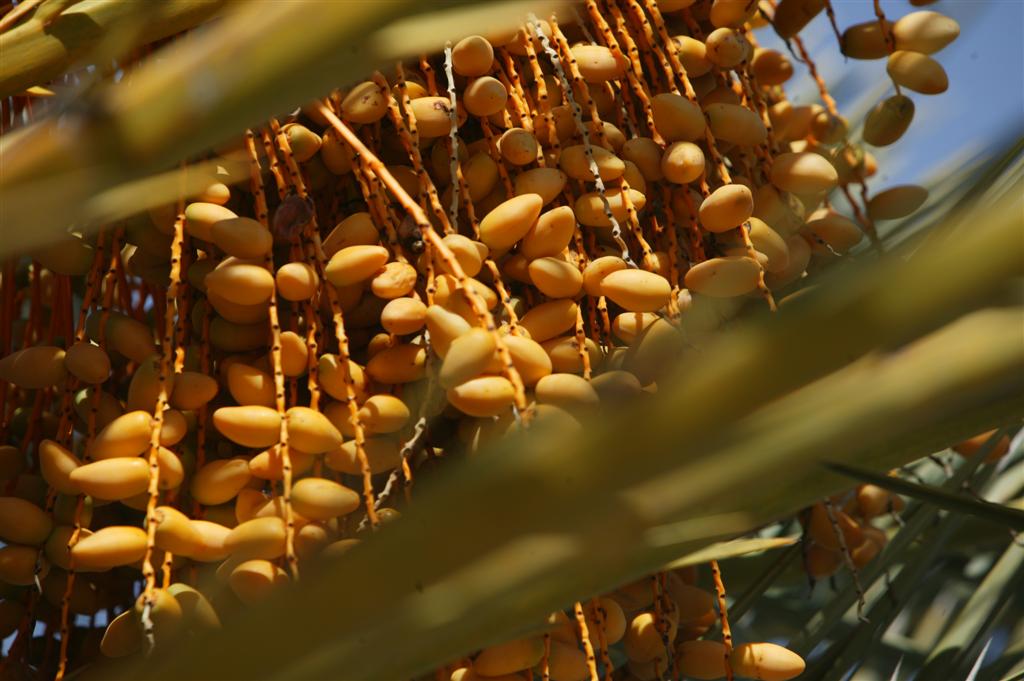
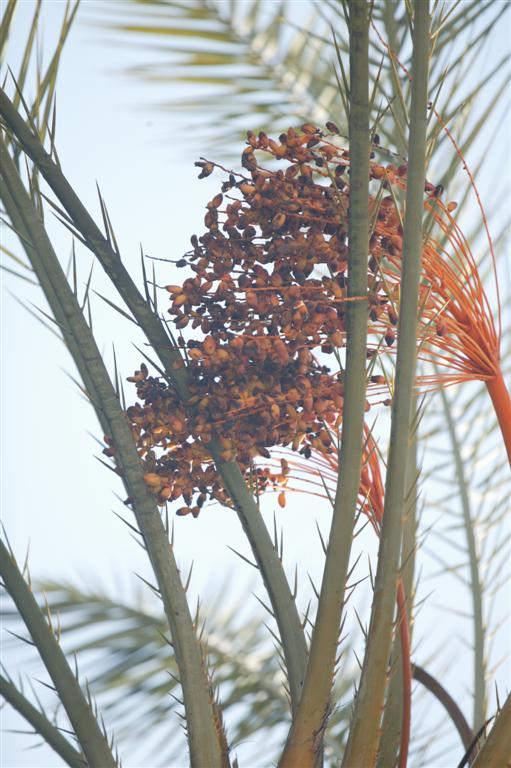
As with other dioecious genera of palms, hybridization can occur. This seems to be of particular importance with Phoenix. In habitat locations there is usually very little hybridization. This is because, in an given natural habitat, there is typically only one species of this genus. In other words, there is no other Phoenix species to hybridize with. But in domestic conditions, such as in a botanical garden or a private garden with many Phoenix species, hybridization is quite common. This has led to variation in the appearance of Phoenix nursery stock as seeds are often obtained domestically where hybridization has occurred.
Consequently, we see Pygmy Date and Senegal Date Palms that are not true in their appearance or form. They look a bit different than one would see in habitat. Even more dramatic is when we see a single trunk species that should only have one stem and suddenly starts to sucker with many stems. This is the hybridization at work. If you begin to carefully look at all the Pygmy Date Palms around, you’ll start to see this variation in trunk size, crown size, and appearance of the leaves. This is all the work of hybridization. Phoenix as a group are very promiscuous.
Culture and Growth of Phoenix
Of the thirteen species of Phoenix, four species are single trunk and the rest form suckering groups of stems. Some trunks, such as the Phoenix canariensis, are massively thick and tall, sometimes to over 60 feet of trunk. Other species such as Phoenix acualis are trunk less and look like leaves coming from one point in the ground. Clumps of Phoenix reclinata can get quite large over time. It is important with Phoenix that you know what species you are growing and give them adequate room for their eventual size. If space is limited, consider Phoenix roebellenii, which is a much smaller species and seldom gets over 10 feet of trunk.


Most Phoenix species tolerate heat quite well and therefore do well in hot, desert areas. It is not unusual to see large Phoenix canariensis in full sun in places such as Palm Springs, Las Vegas and Phoenix. Date Palm groves are found in inland, hot desert areas of California and this species thrives in the Middle East. Other species may need a bit of sun protection if you live in a desert area. Regarding cold tolerance, as a group Phoenix are reasonably cold hardy. Phoenix canariensis, sylvestris, dactylifera and theophrastii have been known to tolerate cold temperatures into the teens Fahrenheit. Although Phoenix would not be considered among the most cold hardy of palms, most species do quite well planted domestically in Southern California.
Most types of Phoenix would be considered to have a slow to medium rate of growth. From a small plant, it typically takes ten years or more to get a fruiting true Date Palm Tree. Removal and establishment of larger suckers from mature plants can speed up the time to fruiting. When one sees a Canary Island Palm with twenty or thirty feet of trunk, one can assume that plant to be several decades old. And, because large Canaries are quite popular as a garden specimen, they are often dug from one location and replanted in another location. Most species will transplant well, but a large root ball and expertise with moving is required. Typically cranes are used to move large specimens.

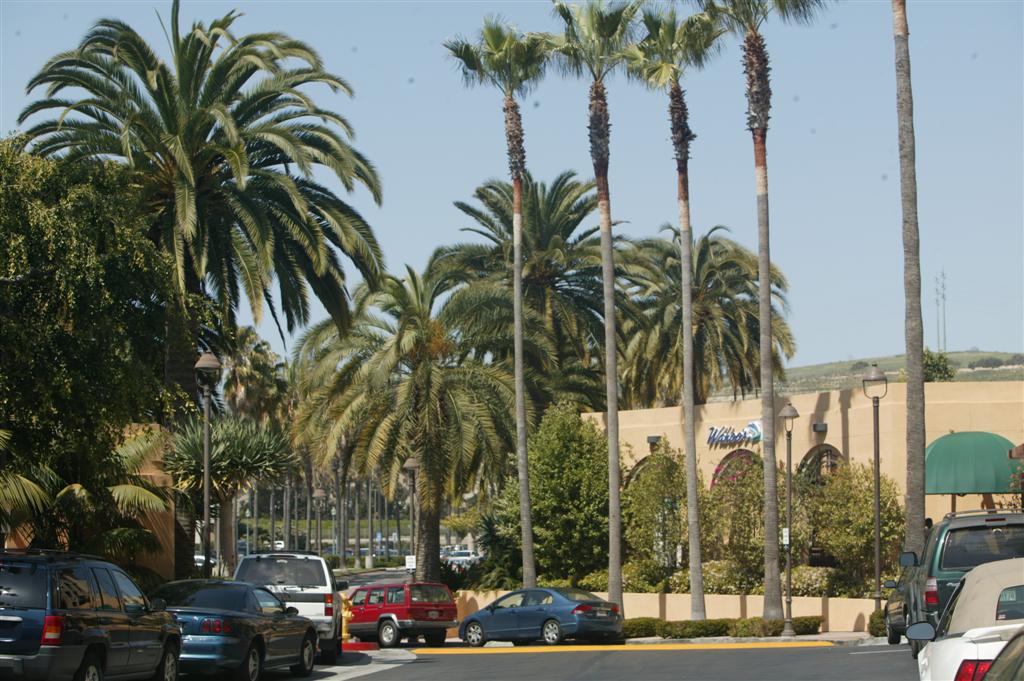
Popularity of the types of large sized Phoenix has changed over the years. Favorites seem to change with the wind. They are utilized because they are large, stately, and make a major architectural statement. In my thirty years as a nurseryman, originally the Canary Island palm was most sought after. Subsequently the Senegal Date Palm seemed to be the rage. In more recent times, the true Date Palm has become popular, probably because it is a bit more affordable. The latter is the result of urban sprawl and conversion of existing Date groves into homes and communities. These grove specimens are dug and planted into landscape areas. Overall, however, of all the larger species, Phoenix canariensis still reigns as the king in popularity.
Most Phoenix species tolerate some degree of drought. It is not unusual to see a specimen in a vacant lot where it is only living on rain water. It is true that domestic irrigation will lead to more rapid growth, but water restriction typically does not cause death of the tree.
DIFFERENT SPECIES OF PHOENIX, THE DATE PALMS
Phoenix canariensis, the Canary Island Palm:
As mentioned above, Phoenix have a very diverse appearance from small to large. The most classical Phoenix species is Phoenix Canariensis, known as the Canary Island Date Palm. It is the largest of the Date Palm family and gets trunks up to 60 feet tall and sometimes as thick as 3 feet. Its trunk is slightly rough but not “knobby” like the Phoenix dactylifera. The crown is full with many long pinnate leaves, sometimes to 15 feet or longer. The proximal leaflets on this and other species have modified to form sharp, long spines. These are dangerous and quite vicious. Viewed in cross-section, the Canary leaves are rather flat and not as plumose as a P. dactylifera or sylvestris, and are a dark green compared to the gray-green of the dactylifera. Fruits are small (1 cm) and yellow when mature.
This species is native to the Canary Islands, a group of islands in the Atlantic Ocean southwest of Spain near the African continent. It is a favorite ornamental palm and planted worldwide. It needs room for growth and should not be planted too closely to a structure or home. Because of it’s slow growth, larger specimens are often purchased for resale to other locations. A popular size for resale is ten feet of trunk so that the canopy is overhead. Smaller, bushy Canaries are quite unapproachable until they have trunked.
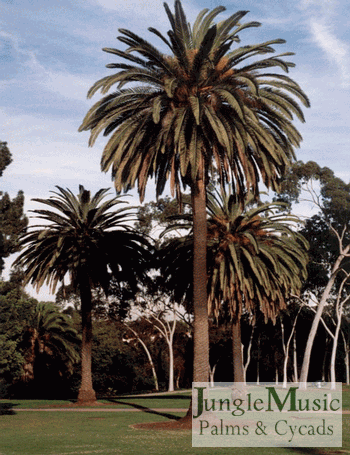
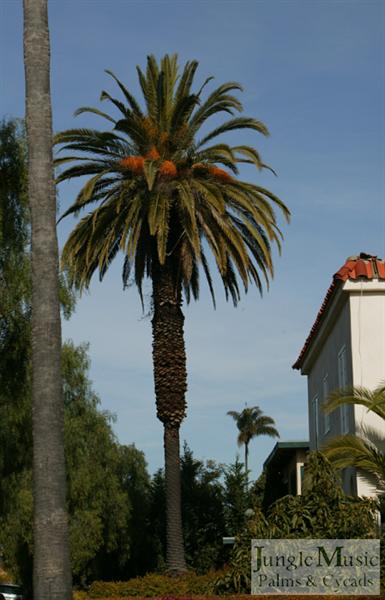
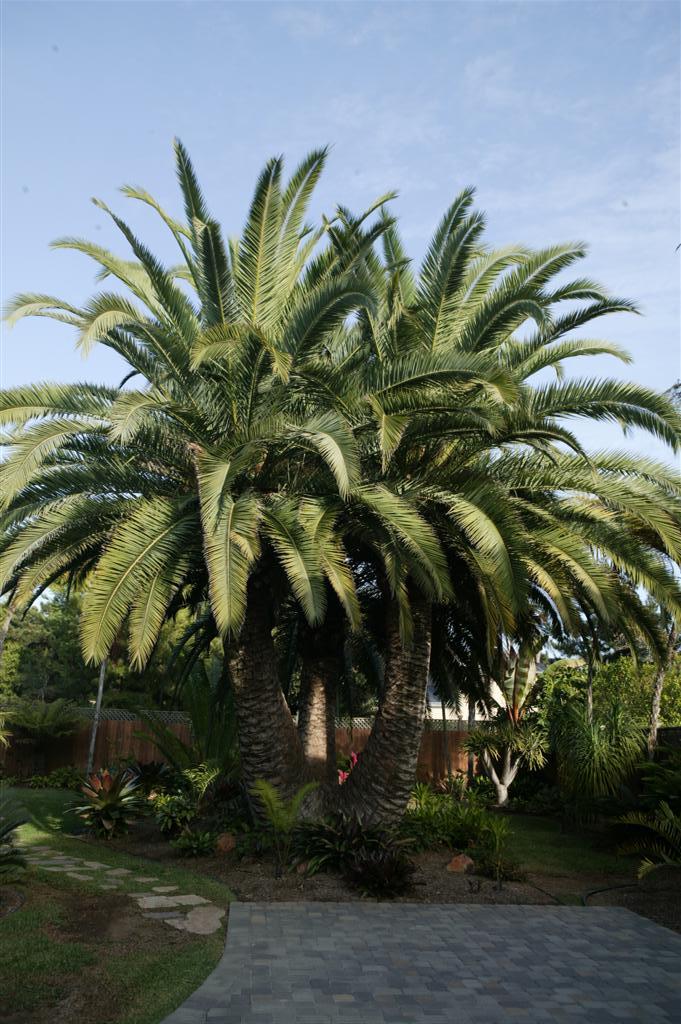
A major problem with this species is a fungal disease called Fusarium Wilt. This is transmitted by pruning equipment, climbing spikes or saws. It causes a progressive death of the lower leaves, often on one side, progressing up the crown and eventually killing the tree. Because it is transmitted by pruning equipment (and arborists), it is not uncommon to see several trees all infected in the same location at the same time. Equipment introduced and passed the disease to each tree. To my knowledge there is no universally effective treatment for this disease and infected plants usually have to be sacrificed. This is devastating for owners and anyone with large Canary Palms should invest in their own pruning equipment that should only be used on their trees. One can imagine that “cleansing” chain saws is nearly impossible.
Update 2017: It is presently felt for sure that other things transfer Fusarium Wilt and that this perhaps includes wind, birds and insects.
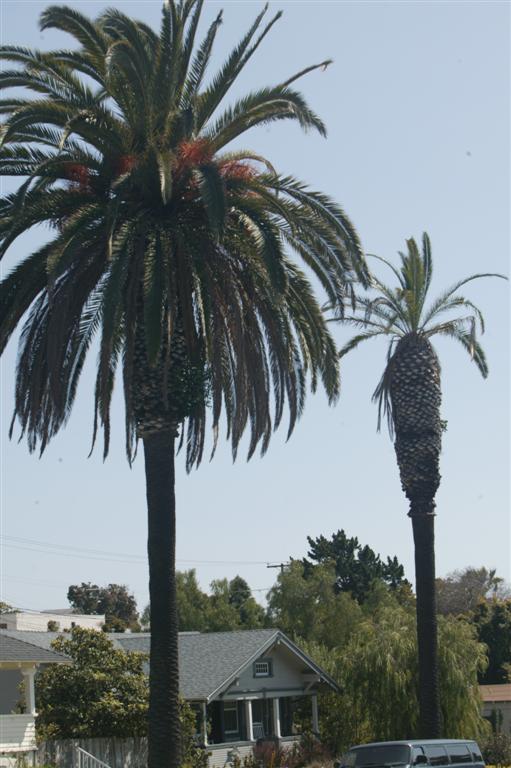
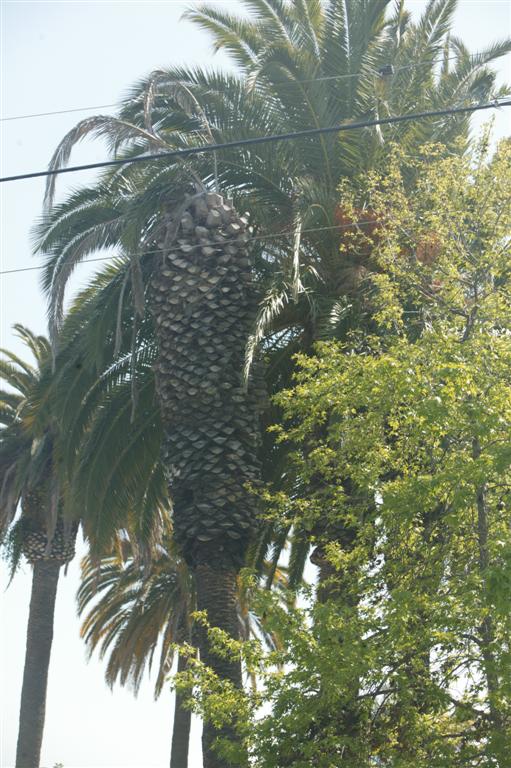
About twenty years ago and because of a pruning technique on the lower leaf bases, the term “Pineapple Palm” began emerging. Such pruning causes a bulge or expansion of the trunk immediately below the crown of leaves. This is a man made appearance and disappears if the pruning is not redone at regular intervals. If one enjoys this appearance and wants to maintain it, consider purchasing pruning equipment and chainsaws for your tree. Some homeowners will even prune juvenile Canaries in such a manner.
Be aware that now, in 2014, there is speculation that wind dispersion or insects may play a role in transferring this disease.
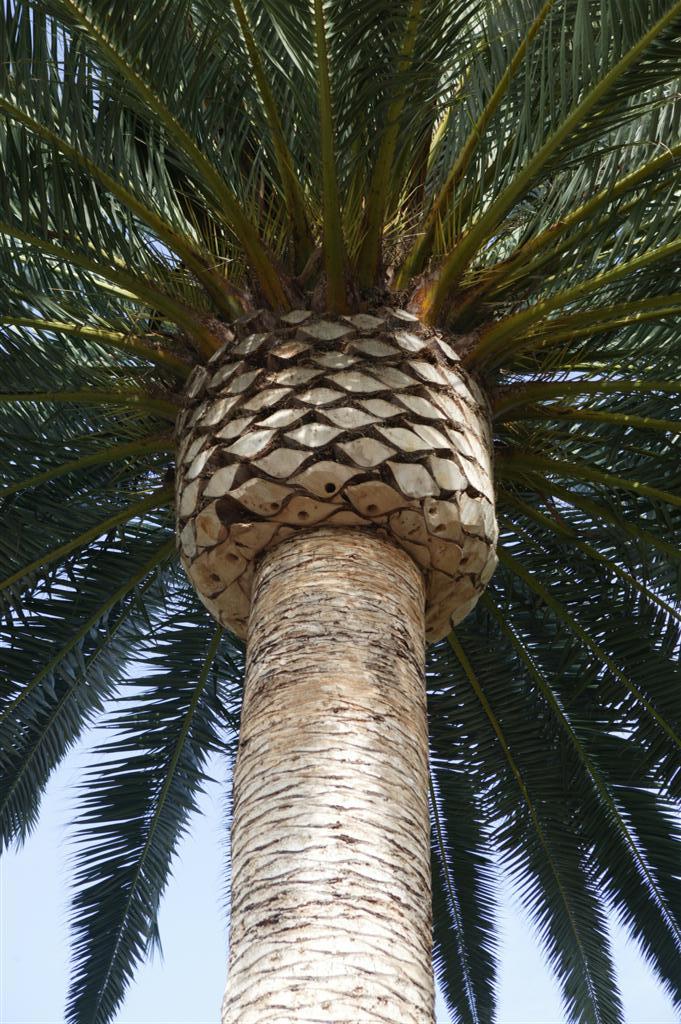
pruning” on a large Canary Island Palm.
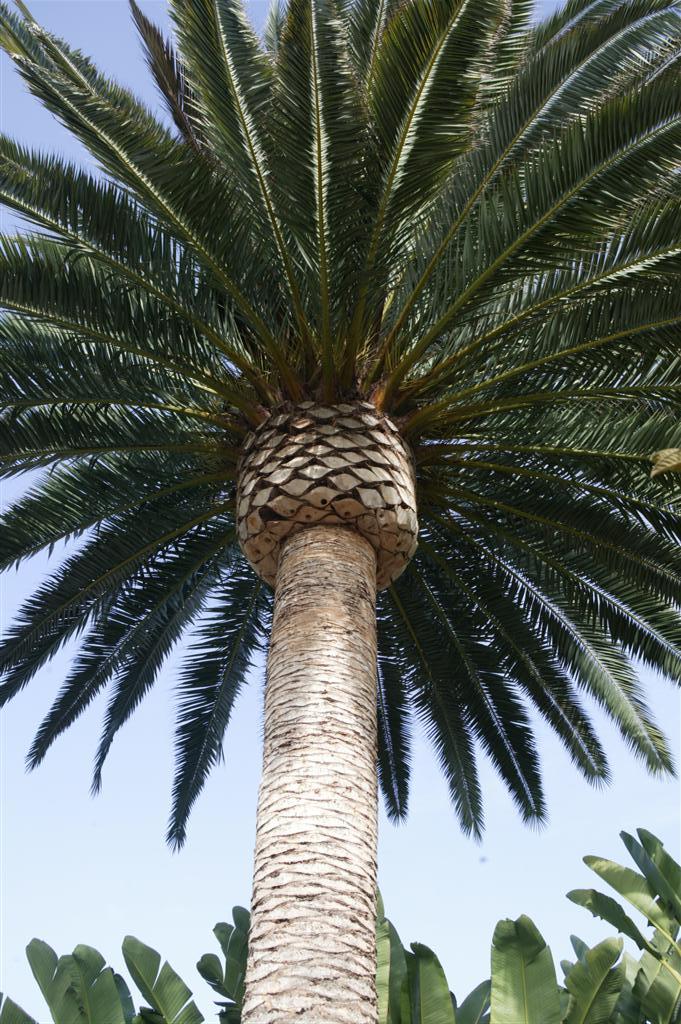
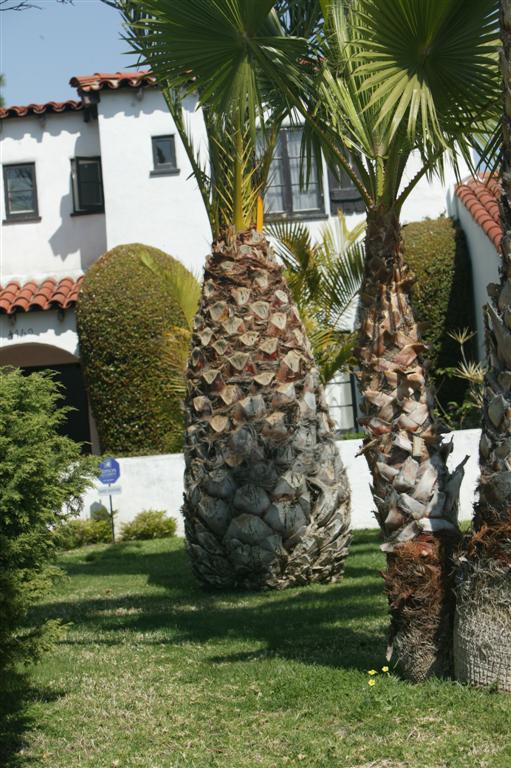
Phoenix canariensis is quite cold hardy, perhaps down to about 15 or 16 degrees Fahrenheit. It is not unusual to see specimen plants in cooler areas like Southern Europe or Northern California. The fruit of this species is edible by report, but because it is quite thin and sparse, it is not nearly as sought after as the fruit of the Date Palm, Phoenix dactylifera.
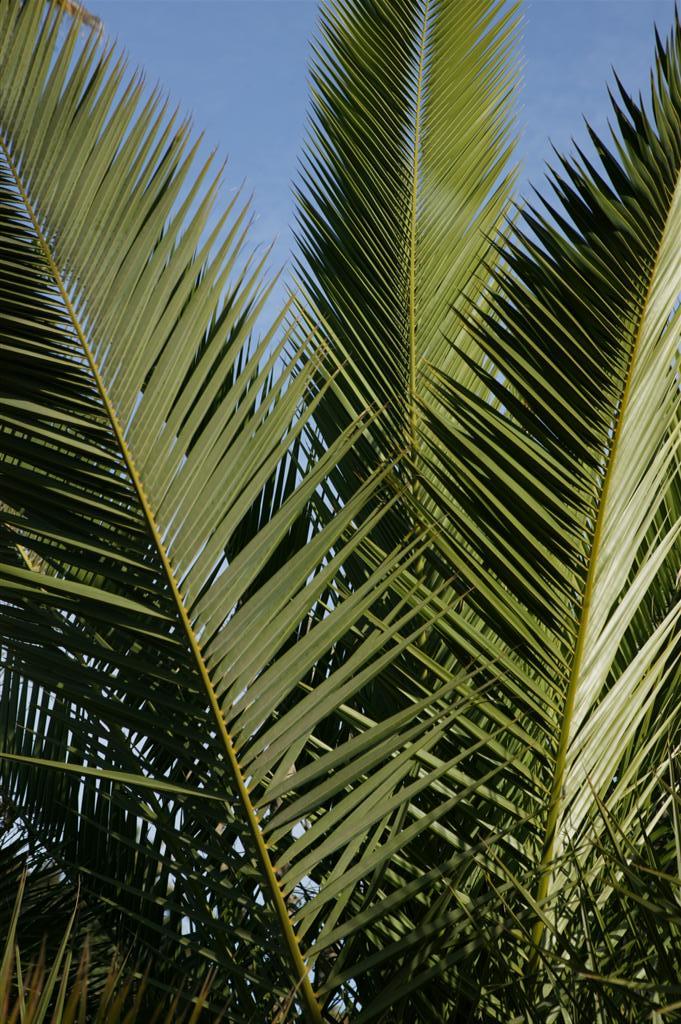
Canariensis crown
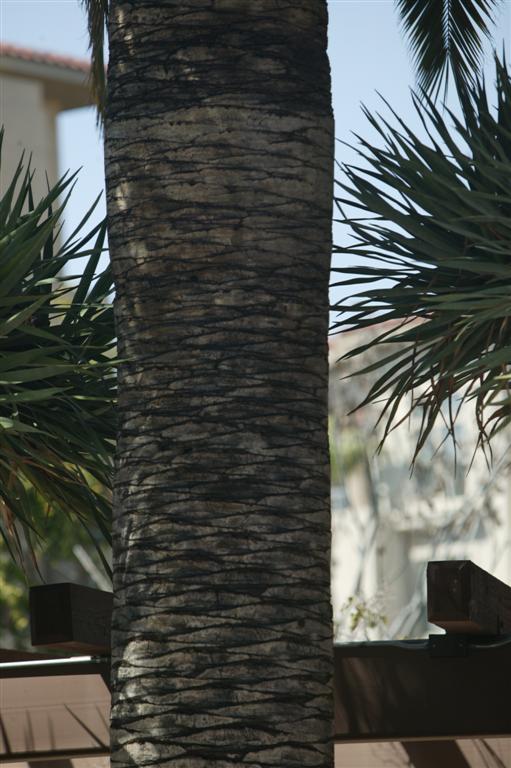
canariensis

Phoenix dactylifera, the True Date Palm
From a historical and resource point of view, this is the most common and popular of the Date Palm family. This is because mature trees produce fruit which is high in sugar and eaten by millions of people. There is evidence that this fruit has been consumed for many thousands of years. The exact area of origin of this species is unknown, but felt to be in the Persian area or northern Africa. The medjool variety of Phoenix dactylifera is one of the more popular varieties because of its soft, supple fruit. Date growers will propagate a grove from what is selected as the finest cultivars of a given variety to optimize the quality of their fruit. Remember that one must have a female plant to produce the fruit and males must pollinate the blossoms of the females. One tree can produce up to 200 pounds of dates during a growing season. Date grower often get municipal laws to prevent the introduction of other species of Phoenix into their growing area so that hybridization with such species and deterioration of their date crop does not occur. This protects their crop of palm dates.
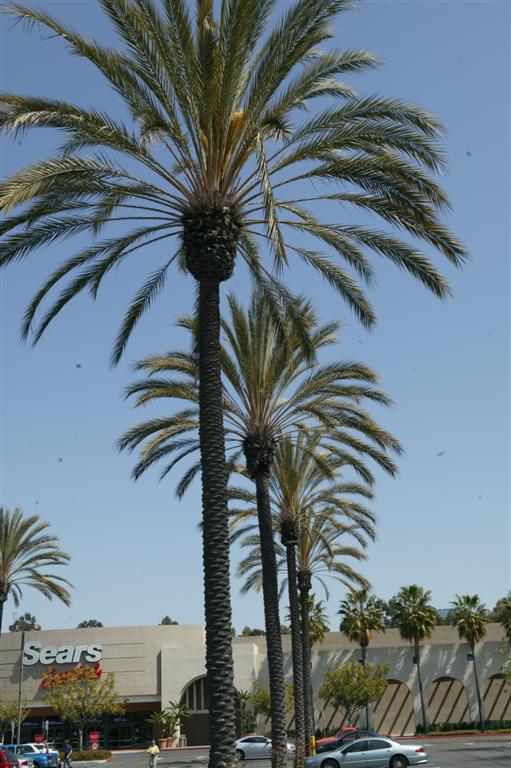
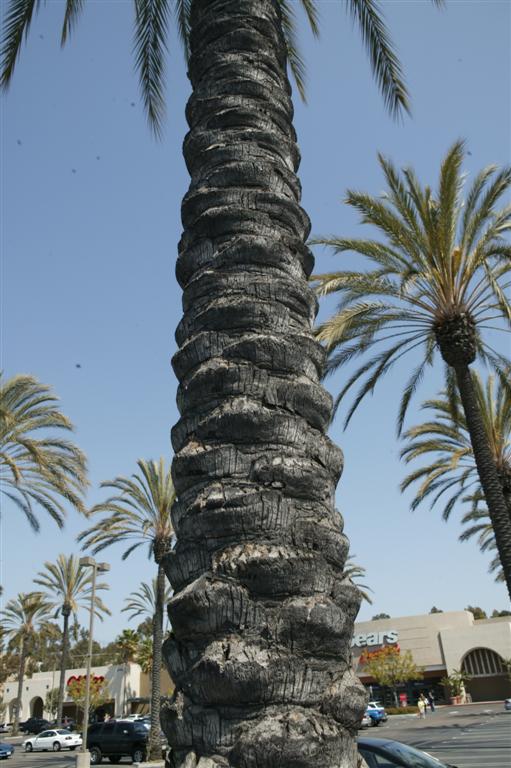
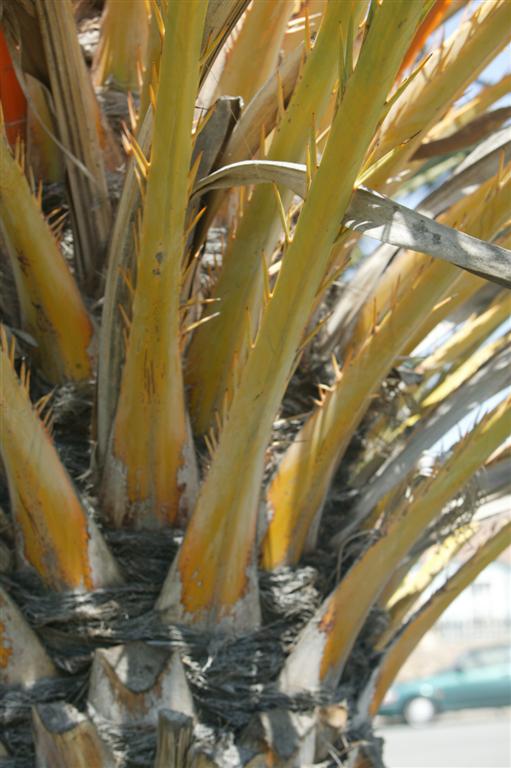
Phoenix dactylifera are typically seen as a single trunk tree, but many specimens are suckering with multiple stems. The additional stems are often removed for easier access to the main trunk for picking fruit. The trunks are shorter than the Canary Palm and typically about 30 to 40 feet. Many times the trunks take on a “knobby” appearance from tissue from the old, removed leaves bases after pruning (see photo above). The crowns of leaves are smaller than a Canary and more of a gray-green or sometimes blue color. This blue color to the leaves is even more apparent in hot, dry climates. Leaves are armed with spines and fruit-bearing typically takes about 10 years.

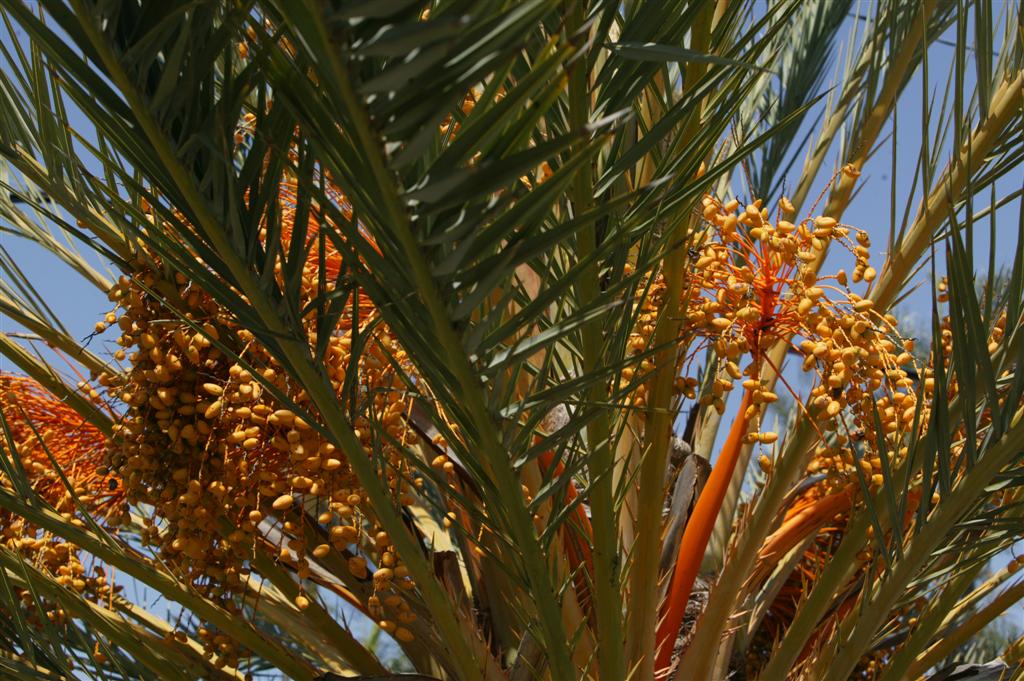
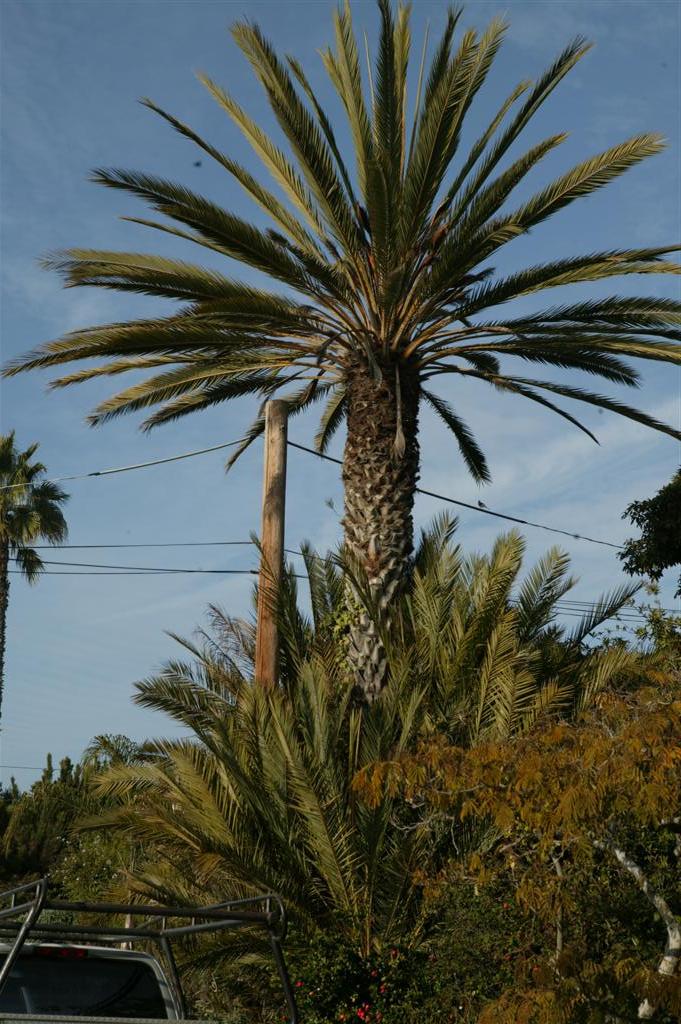
This species is equally as cold hardy and drought tolerant as the Canary Palm, but does better than the Canary with dry, inland desert heat. Trees are also susceptible to Fusarium (above). In more recent years, this species has gained in popularity because of the availability of dug trees from sold-off date groves (see photos above).
Phoenix roebellenii, the Pygmy Date Palm
The Pygmy Date palm has been popular for many years because of it’s ease of growth and small stature. Its origins come from Asia and more specifically Southern China. Laos and Vietnam. Of note and in contrast to the species above, the Pygmy dates come from more humid areas and this species natively often grows along river beds. Another interesting fact is that natively this species is often a suckering species with thinner trunks and sparse crowns. Domestically grown, the plants are typically single trunk with fuller crowns. It is possible to find both single trunk and suckering varieties at specialty nurseries. But, the point should be made that commercial plants are often planted as “multiples”. This means that several single trunk plants are put into one pot. This is opposed to the true, suckering plant seen in habitat. It is speculated that the suckering ability of this “species” was lost somewhere along the time during commercial production of the species.
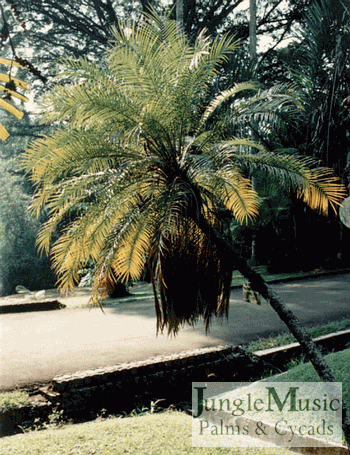
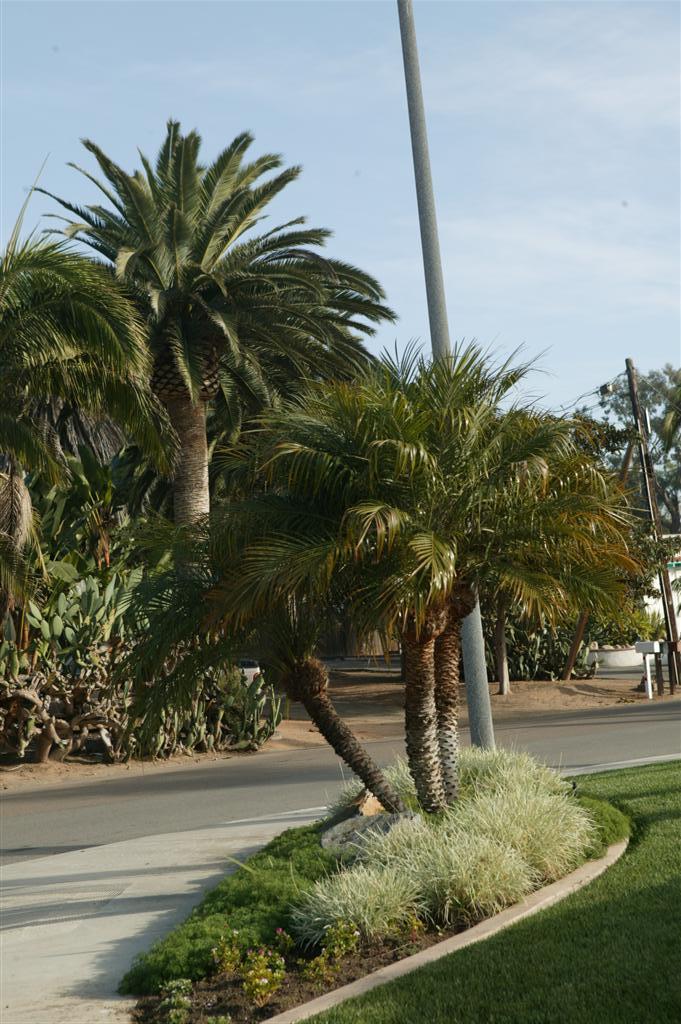

Trunks of Phoenix roebellenii in domestic plantings are typically under ten feet and about 3 to 5 inches thick. This means that a very old specimen will not typically be above 12 feet in height. Multiple specimens will often show the “stair step” appearance with a dominant plant and shorter companions adjacent to the main trunk. With age, trunks have lots of fiber, matting and hair. This can be pruned clean to give a somewhat flaring, knobby trunk (see below). The crowns of leaves are typically full and soft appearing. Like other Phoenix species, leaves do have spines and this species should not be planted close to walkways and stairwells. In coastal areas plants demand full sun and “shading out” of a specimen can result in decline or death to the plant. Although not the easiest plant for indoor growing, it can be done if adequate direct light is given. Two photos below of nursery plants show (at an early age) the difference between two individual specimens being planted in a container and the true suckering nature of some Pygmy Date Palms. To the untrained eye it might be difficult to distinguish, but suckers actual begin and emanate from he mother trunk.

not true suckering.
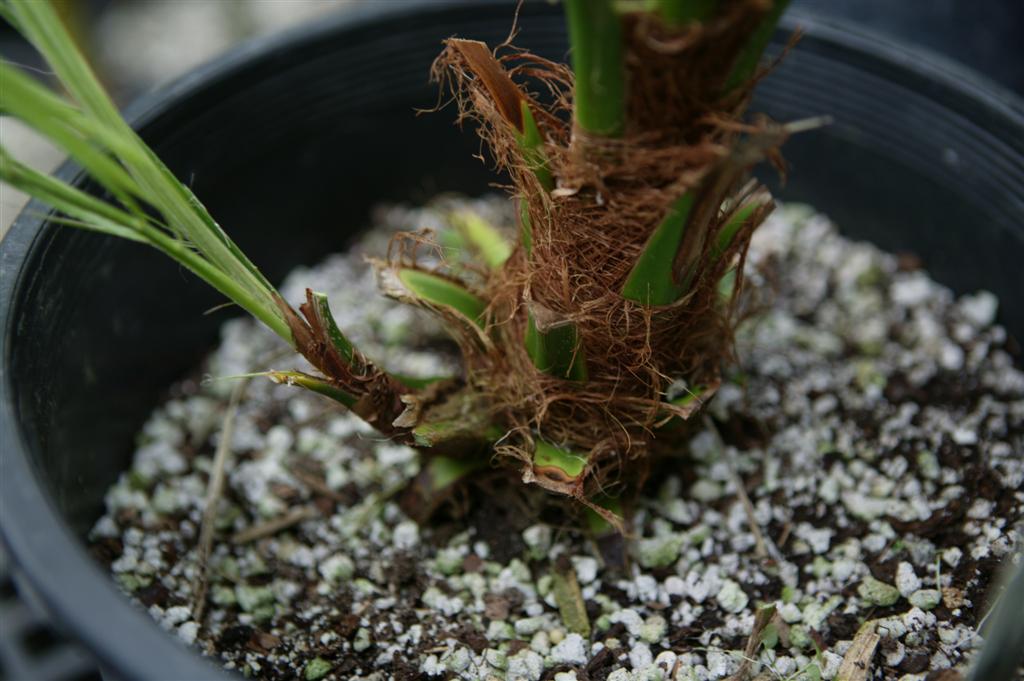
in the photo to the left.

the trunk on this Pigmy Date Palm.
Most Phoenix species prefer full sun. Phoenix roebellenii (in most areas) is no exception to this rule. Plants placed in shaded out areas under-perform. Ideally, it should be given at least half day sun. Thus, planting them on the north side of a home in shade may result in poor performance or demise. Some sun protection may be needed in hot desert areas. Plants are a bit drought tolerant, but not as much as many of the other species of Phoenix. Cold tolerance is into the low twenties F. As this is less than many other Phoenix species, one can see this species is not the optimal choice for colder areas. Unfortunately, home improvement centers push them to customers in colder areas who probably should try something else.
Pygmy Date palms can be dug and moved, but don’t be fooled by their smaller size. If you do plan on digging one, get a very large root ball. All too many people have lost their plant because they thought a “little plant” only needs a little root ball.
Phoenix rupicola, the Cliff Date Palm
This is a solitary trunking species that comes from India and adjacent areas at rather high elevations and often on hillsides or slopes of mountains, thus giving it the name of “Cliff Date Palm”. It resemble the Canary Island Palm but is smaller, has a thinner trunk and a much softer and more graceful appearing crown. Trunks are typically about a foot in diameter and only get to about 25 feet. The leaves are quite flat and in a single plane and about ten feet in length. The spines are less vicious than the Canary and the leaf color is more of an emerald green. Because of the droopy characteristic of the leaf, it is often felt to be more exotic appearing than the Canary Palm.
This species might be an ideal choice for someone who likes the statement of a Canary Island Palm but doesn’t have the room for it. This species is definitely a beautiful palm, but it doesn’t have the cold hardiness of the canariensis or dactylifera. Estimates are that it will tolerate temperatures in the mid-twenties F, but not low 20’s. It is argued that this is the most beautiful of the solitary Date Palms with its graceful and soft crown. It prefers full sun in coastal areas and, because of its size, is not an ideal palm for interior growing.
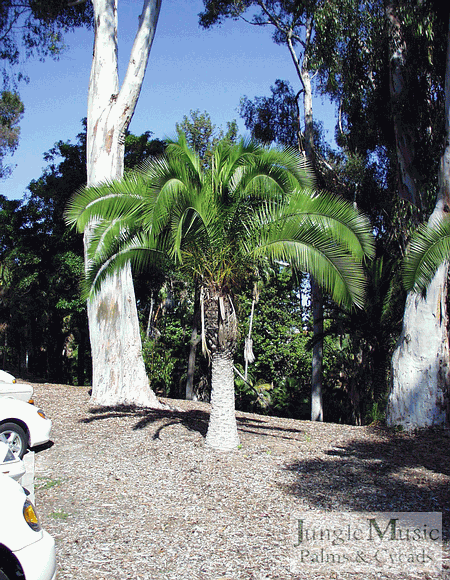

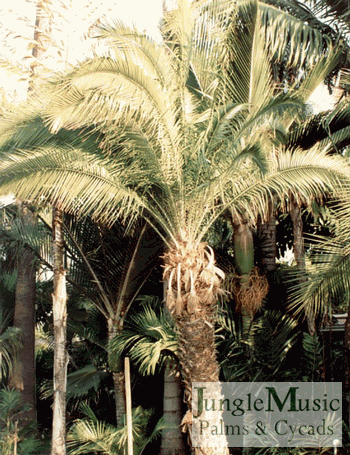
Phoenix reclinata, the Senegal Date Palm
This suckering species has multiple stems and is a medium to sometimes large palm native to central and southern Africa, Madagascar and the Comoro Islands. I mention above that it is “sometimes large” because heights of this species are variable but have been known to reach 50 feet. The term “reclinata” is felt to refer to the “reclining” nature of the outer stems as they move away from the clump and then upwards. Stems are 4 to 8 inches in thickness and covered with fibers and hairs. This species freely suckers so pruning and elimination of trunks is often necessary to give it a graceful appearance. Left unchecked, clumps can become overwhelming with as many as fifty trunks. Because of this, this species would be considered a high maintenance species, especially during its earlier years.
Classical plants from habitat often have a very flat (one plane) leaf, but commercial cultivars are often plumose and “spiky”. Mature specimens demonstrate one of the nicest characteristics of the species: taller trunks gracefully leaning away from the midline and silhouetting themselves against the blue of the sky. These trunks therefore may show a gentle curve as they head upwards, somewhat reminiscent of a Coconut. They can be quite beautiful if stems are artistically eliminated to give variable heights to the trunks and crowns and can be very dramatic in an open lawn setting or against a tall building. This species wants to be planted in full sun. It should be given ample room and can tolerate temperatures into the low twenties F.
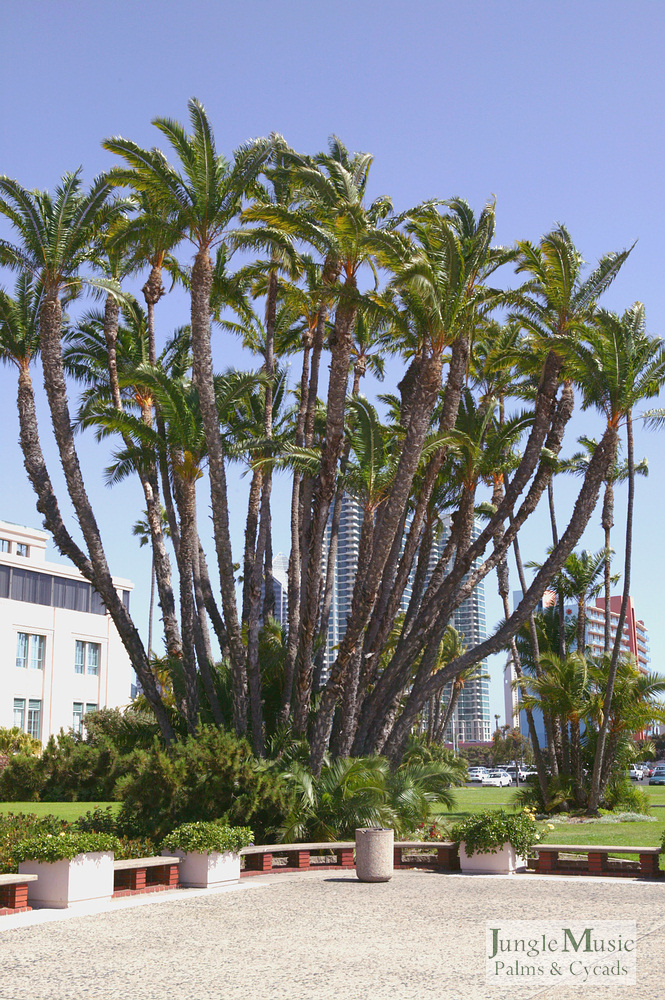

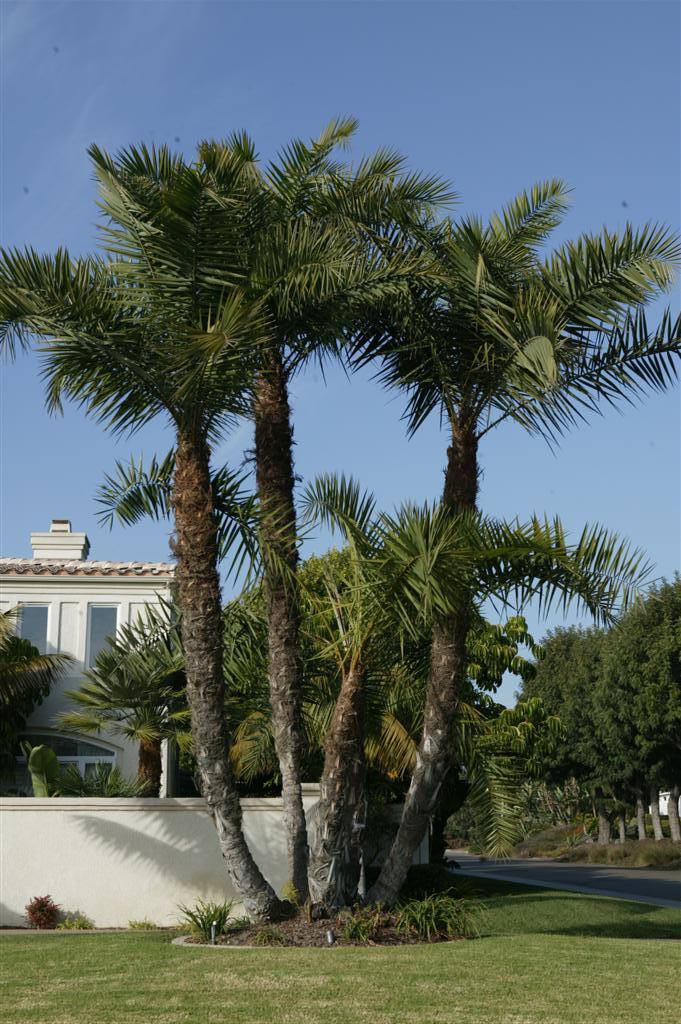
Phoenix sylvestris, the Toddy Palm or Wild Date Palm
This species is from southern Pakistan and India. It resembles a Phoenix canariensis but the trunk is not as thick. It carries many leaves and the overall crown shape is somewhat smaller and more “rounded” than the Phoenix canariensis. It is known as the “Silver Date Palm”, the “Toddy Palm”, and the “Wild Date Palm”. The trunk does get to about 40 to 50 feet and often will show old retained leaf bases giving it a patterned appearance of the trunk. Different from the Canary Island Palm, this species has multiple ranks of leaflets on the leaves (not flat in profile) and may appear somewhat “fluffy”.
For some people, Phoenix sylvestris may seem to be an alternative to the Canary Island Palm. But, it is not as cold hardy as the Canary. It also has a different color to the leaves and a thinner trunk. I’d estimate this species will tolerate temperatures into the low 20’s F, perhaps upper teens. It does tolerate hot conditions and is a good grower. Like other species, it is extremely spiny and care must be used when pruning this species.
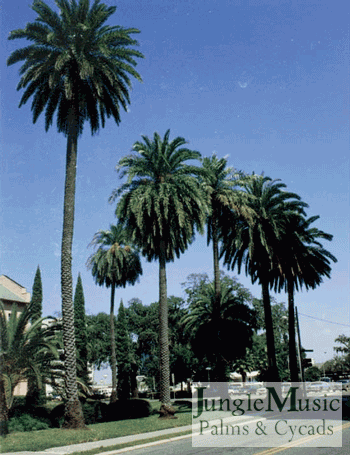
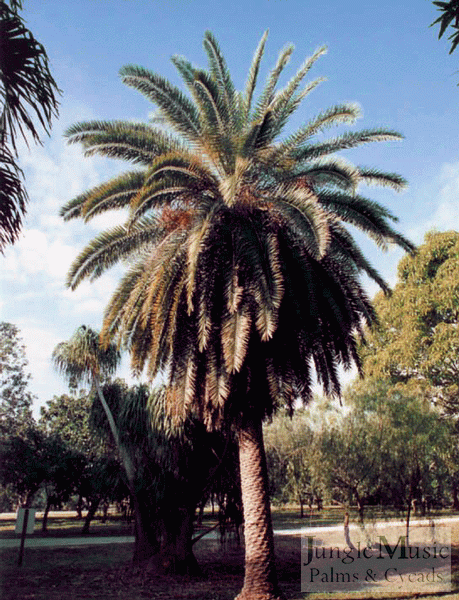
Phoenix theophrastii, Cretan Date Palm
Phoenix theophrastii is a Phoenix species with a very limited area of distribution, native to Southern Greece and the Island of Crete and perhaps some surrounding areas. It is a suckering species that gets to over 40 feet height. It has rather thin trunks and is very spiny with prickly leaves. Some feel it might be related to the true Date Palm. It’s crowns of leaves are smaller than the P. dactylifera and it suckers more than the Date Palm. Different than P. dactylifera, this species fruit is not sweet or particularly edible. It does have a somewhat gray color to the crown. Specimens look very thick and impenetrable when smaller but with time will show some taller stems.
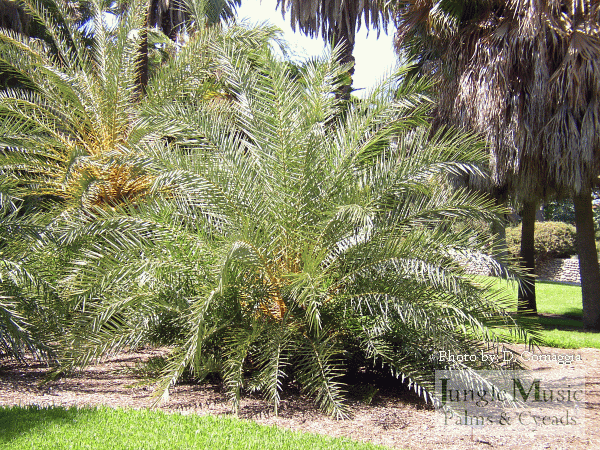
at this stage
Phoenix acaulis, the Dwarf Date Palm
Phoenix acualis is a unique species in that it is basically “trunkless”. It is for this reason that it is known as the Dwarf Date Palm. It is native to northern India and Nepal. It is a small palm and single trunked. However, like other Phoenix, it is spiny. Trunks apparently are subterranean and roots seek out water as this species is often found in very arid areas. Fruits and blossoms are often seen at ground level. Overall the plant is a rather small plant with gray-green leaves. Because of its small size, it may do well among succulents or in a xerophytic garden.
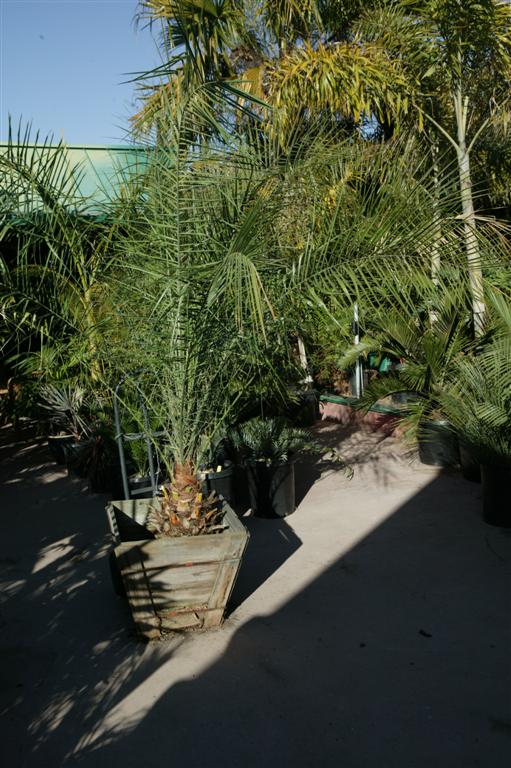
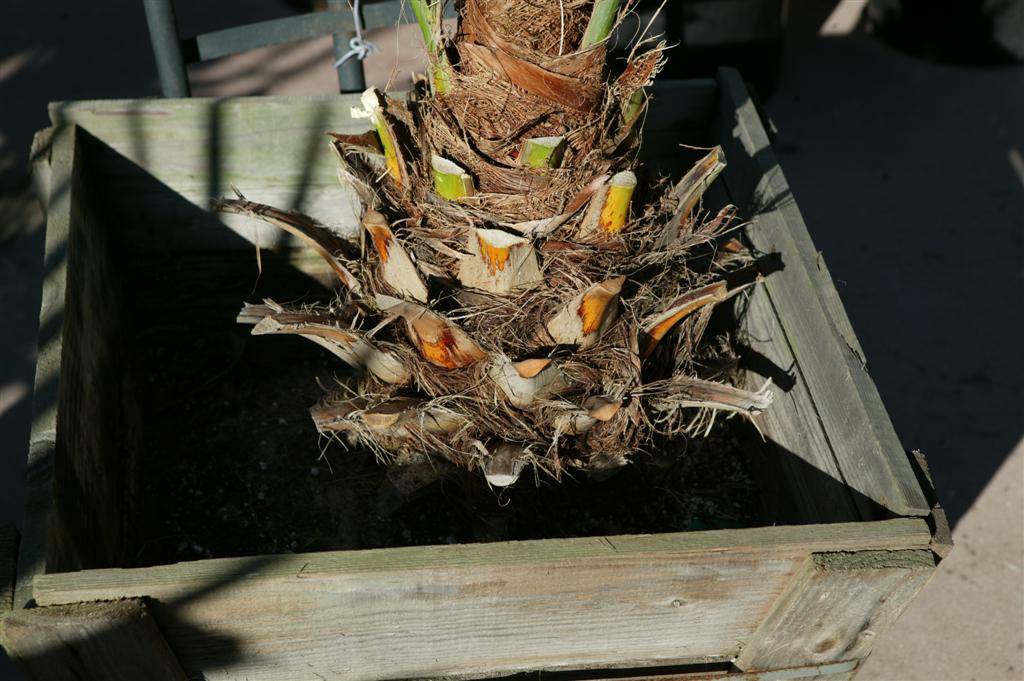
Phoenix loureiri and other rare species
Phoenix loureiri is from India and other Asian countries and is typically a single trunk plant but can be seen to sucker. It is a smaller species with trunks seldom over 15 feet and about a foot in diameter. They are an alternative to the much larger Phoenix canariensis and have somewhat plumose leaves. The leaf color is green to gray-green. There is felt to be a variety of P. loureiri known as “humilus“. It can tolerate full sun or partial sun and has some degree of cold hardiness.
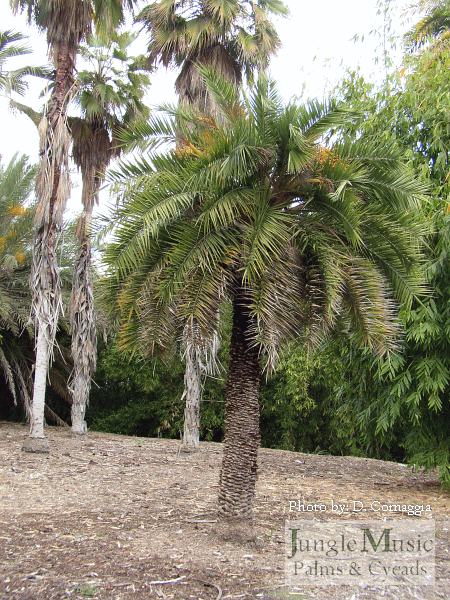
There are several other unusual species of Phoenix, but it is beyond the purpose of this article to cover these species. Let it be said that they are all spiny, single or trunking, and many have ornamental value.
Phoenix Hybrids
It is quite common for nurserymen and plant enthusiasts to make intrageneric hybrids (crosses within a genus). We have seen a lot of such crosses in orchids, bromeliads and various types of palms. But, with Phoenix, hybridization occurs without man’s effort and only requires mere proximity of different species. In general, Phoenix set seeds quite easily. In habitat, this ability is probably prosurvival. But, in habitat, there are not typically multiple different species of Phoenix side by side or in the same area. So, in the wild, the species procreates, stays pure and lives on. In a domestic setting this is usually not the case. One must assume that seeds from any given plant in a domestic area are hybrids unless ones has pollinated the male blossom with pure pollen or there are no other species around. This is true regardless of the species of female Phoenix. As nurserymen will often opt for cheaper domestically provided seeds of “impure” heritage, there is a multitude of “different” looking ” Phoenix being sold and grown throughout the world.
I am not implying that this is a bad thing. It just makes it a guessing game as to the identify or parentage of any given domestic Phoenix that one might see. And, the more one looks, the more one sees evidence for this natural process of hybridization. One might see a “Canary” with an remarkably thin trunk. Or, a Pygmy Date with a husky trunk and very long, stiff leaves. In fact, I’ve seen almost every combination of Phoenix characteristics imaginable.. The important thing is to just recognize this fact and rest assured that calling a different looking plant a “hybrid” may in fact be the correct answer.
Below is an example of a plant that appears to be a Phoenix canariensis. The crown appears to be a normal Canary Island Date Palm. But, the trunk is quite narrow, about 12 inches thick. This would be very unusual for a Canary. Also, it is quite smooth compared to a typical Canary. Could it be a P. rupicola? My guess is that it’s a hybrid.
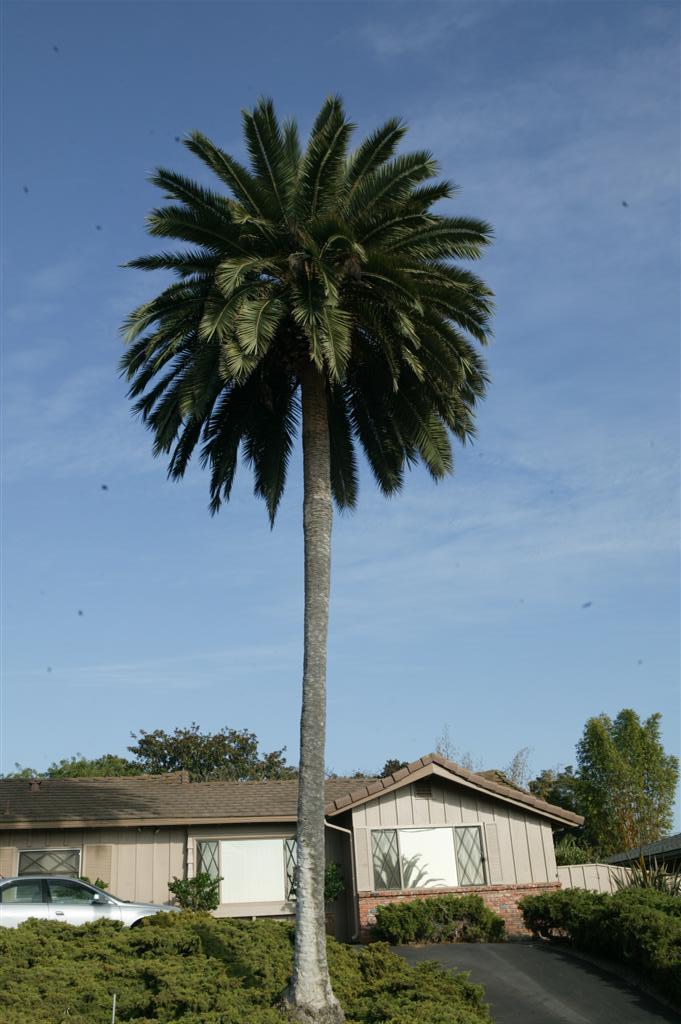
I mentioned previously how Phoenix reclinata in its natural form has a very flat leaf, single plane more or less. The picture below shows an example of this natural form of reclinata.
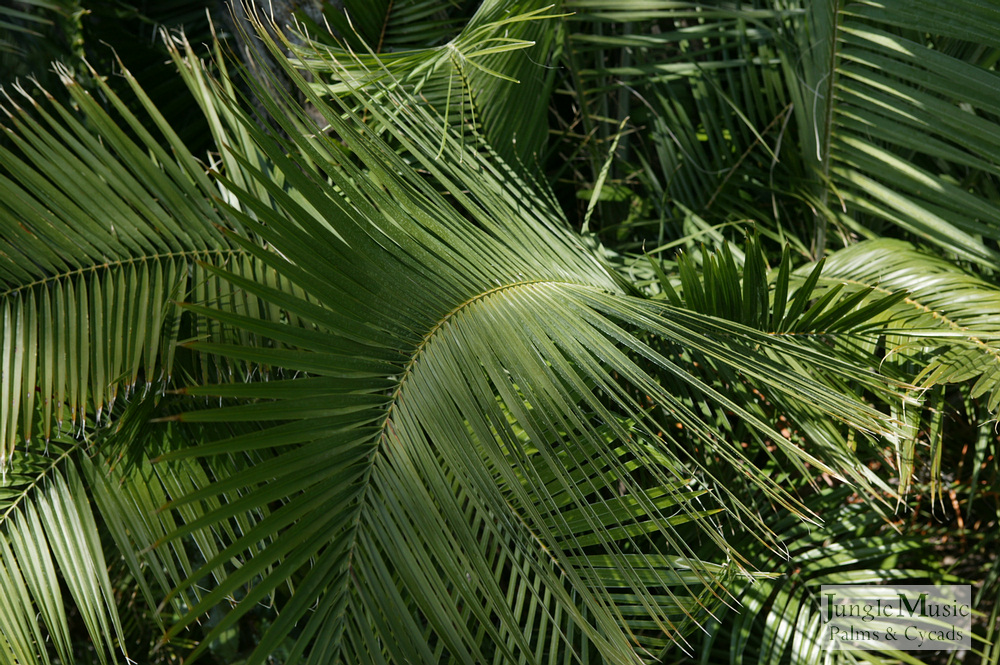
Compare the picture above to the more typically seen plumose (multi-ranked leaflets) “Phoenix reclinata” below. Note how the leaflets come off the petiole at multiple angles. This is the result of hybridization.
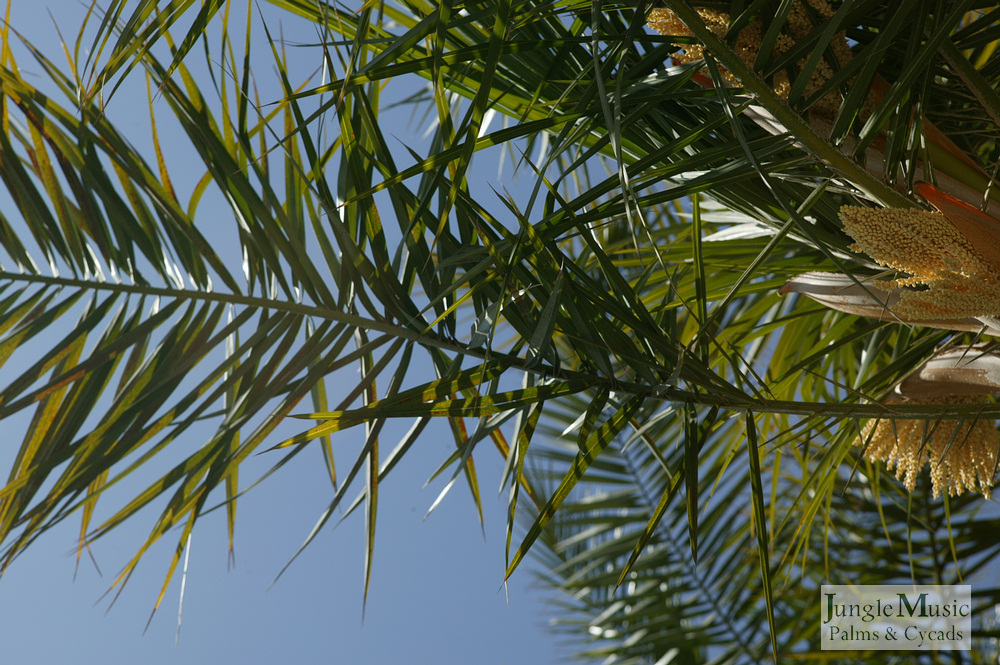
Below is an example of the Phoenix roebelenii from domestically produced seeds. Note there is a sucker emanating from the base of the mother trunk. This is also the result of hybridization in the domestic environment.
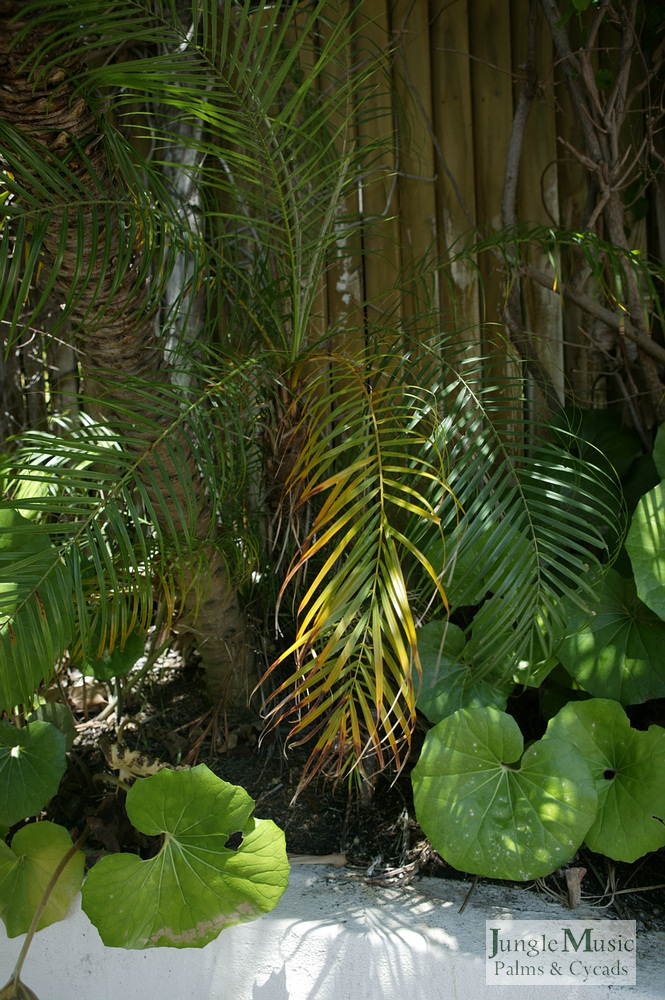
The more one looks, the more unusual combinations of morphology one will find. Phoenix hybridize like crazy.
FREQUENTLY ASKED QUESTIONS (FAQ’S) ABOUT THE DATE PALMS
Will my Date Palm make edible dates?
Basically, one must have the true Phoenix dactylifera to get dates, and one must have a female. And, there must be a male in the area of your female. There are various varieties of the Date Palm with differences in the quality of the fruit.
Can I cut suckers off my Date Palm to make it a single trunk specimen?
The answer is yes, and this is commonly done in commercial groves of Date Palms. This is often done just above the soil line.
How long does it take to get edible dates?
A Phoenix dactylifera has to be a female and of fruiting size. Typically such a plant has trunk well overhead. This will take a minimum of ten years, usually longer. And, you must have a pure male Date Palm nearby to pollinate it. A female with no male in the area will not produce edible dates. And, hybridization with other Dates such as the Pygmy Palm or the Canary Palm will give un-edible dates.
How do I get a large Canary Island Palm for my yard?
If resources permit it, most buy an existing large P. canariensis from someone who transplants large specimen palms. This means the broker buys one from someone, already large, and digs it up and moves it to your yard. Because this requires a lot of effort, time, crane expenses, and risk, purchasing such a plant is usually expensive. One can, of course, buy a containerized smaller tree and be patient.
What is the best size to buy if I get a large Canary Island Palm?
This varies, individual to individual, but most people want one that is overhead. For practical reasons, this keeps the sharp spines well above you head if you walk below it. For this reason, plants with a trunk of about ten feet are the most popular. Realize that, in time, you ten-footer will get much taller. I’ve seen old specimens with more than forty feet of trunk. If resources are limited, plant a smaller containerized plant and be patient. In time, it too will get overhead and majestic appearing.
Should I use my own pruning equipment for removing old leaves on my Phoenix?
The answer is yes! Fusarium is a disease that Phoenix are very susceptible to. It is typically transmitted by pruning equipment, shears, shoe spikes, etc. If a trimmer uses equipment that is reserved only for your plants, it won’t transmit the disease. This includes chain saws. I feel it is almost impossible to totally sterilize a chain saw, no matter what anyone tells you. It is all too common to hear of a dying Canary that was pruned six month ago. Although Fusarium infections are most common with Canary Island Palms, there are reports of its transmission to several other Phoenix species. It is definitely advisable to have a professional pruner use your equipment when he works on your plants. If this is not possible, demand that the tree trimmer very thoroughly sterilizes his equipment.
What can I do to avoid all the dropping fruit from my Date Palm (or other Phoenix).
There is no chemical or drug that prevents fruiting on your Phoenix. If you get a male, there will be no fruit but you will still have falling blossoms. The best thing to do is cut off the blossoms when they are young. It does not hurt the tree and lets you avoid fruit that will form later.
Can I sell my large Canary Island Date Palm?
The answer is yes, if it is accessible and not too large. It must be disease free and a good looking tree. Very large palms have a very limited purchasing market. Even if yours is the perfect size, realize that you won’t get rich selling it and the usual price paid for a ten foot Canary is under $1000. More profit will be made by the buying professional, but it’s nearly impossible to avoid this. If interested, read our article “I want to sell my large palm tree” at this site. This article points out the drop in value of Canary Palms because of disease problems and risk to the digger.
A spine punctured through my skin and is painful. What should I do?
Such an injury always requires a medical evaluation because the spine can break off under the skin and lead to various complications and infection. If you suffer such an injury, immediate seek medical attention. Always use eye protection if working around a Phoenix Palm.
My Canary Island Palm has Fusarium. What can I do?
Unfortunately, this is usually a fatal infection and your plant will probably die. You could hire a plant pathologist to advise you, but don’t be overly optimistic that the plant will survive. (see pruning precautions above). Make sure you don’t transfer the infection to other adjacent Phoenix plants.
Can I dig up and move my Pygmy Date Palm?
Even though large Phoenix are commonly dug and survive, the Phoenix roebellenii is a bit of a challenge. Because of its small size, people think all that is needed is a small root ball. This is not true and many smaller Pygmies that are dug die slowly over the next month or two. To succeed you must obtain a very large root ball and be careful to avoid tearing the roots.
Will rooting into the ground on my containerized Phoenix palm hurt the plant?
Phoenix palms in containers are particularly vulnerable to shock when they have rooted into the ground and then are moved, tearing the roots that have worked their way into the soil. Within a few weeks, one typically sees the new spear and leaves that are opening turn brown. They look dry, brown and dead. It always affects the newest leaves the most. If one is transplanting a Phoenix or just purchased one, always look at the new spear and the newest leaves for signs of shock or injury. And, if the plant recovers, you will see the new spear turn green and healthy looking.
Can I plant my Pygmy Date Palm right next to the walkway?
The answer to this question is fairly obvious: the answer is no for health and safety reasons. Eye punctures by spines are something one wants to avoid.
My Phoenix Palm doesn’t look like any of the photos. What do I have?
As mentioned above, Phoenix are very promiscuous and hybridize quite easily. For this reason, one frequently sees palms that are “in-betweeners” and don’t appear to be a definite species. In an area like Tampa or Miami, it is sometimes more common to see hybrids than it is to see pure species. This is why plants grown from wild collected seeds (little chance of hybridization) are sought out by specialty palm nurserymen.
Can I grow my Phoenix Palm inside the house?
Phoenix species are a poor choice for interior growing. Unfortunately, because common species such as the Pygmy Date Palm are so readily available in the home improvement centers, people think they must grow well inside the house. The fact is they are a bit of a problem as an interior plant. They need lots of sun and good air movement. There are some successes indoors, but there are much better species to grow as houseplants. If one does chose to grow one inside, be very careful about injuries from the spines.
I want dates. Is there any way to tell if a small plant is a female or a male?
The answer is no. Only if you get a removed sucker from a known female parent, can you predict the sex
I have one female Date Palm. Will I get good fruit?
To get pure fruit you also need the female flowers to be pollinated by a male Phoenix dactylifera. If you only have one female plant, any fruit formed would most likely receive pollen from some other type of Phoenix and give hybrid fruit which is undoubtedly inferior in quality. This is why the date grove localities try to prevent homeowners from introducing other species of Phoenix.
Summary
I hope that the reader now understands that there are many species of Phoenix. But, there is only one true Date Palm. And, to get edible dates, you must obtain a female Phoenix dactylifera, the true Date Palm. And, you must have male plants for pollination in your locality. Some species of Phoenix are suckering (multiple stems), others are single trunk. Some are short while others tower overhead. All have spines. Suckering species may need pruning of offsets to create the most beautiful mature specimen. In general, Phoenix do not make great house plants, but can be grown with some success indoors if given enough light. All Phoenix hybridize easily..
At our nursery we offer all the species of Phoenix for sale in containers. We also sell over 800 other types of palms and countless species of cycads and other tropical plants. We are not company that digs and cranes large specimens, but may be able to assist you in locating fine specimen trees or a reputable transplanting company. Please contact us if you are interested.
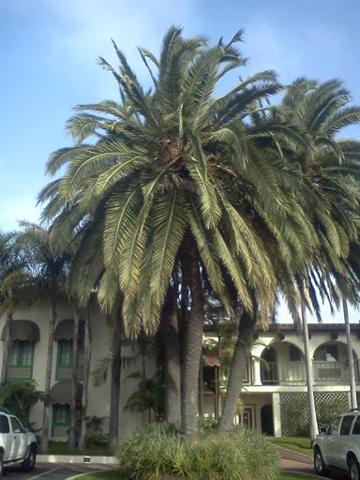

TO READ DESCRIPTIVE ARTICLE ON PYGMY DATE PALM, CLICK HERE
TO SEE COMPLETE LIST OF ARTICLES ON PALM TREES, CLICK HERE
Phil Bergman
Owner and Author
- PALM TREES, CYCADS & TROPICAL PLANT BLOG - October 1, 2020
- TRACHYCARPUS
The Windmill Palm - September 30, 2020 - FAN PALMS –
PALMS WITH CIRCULAR LEAVES - September 29, 2020











